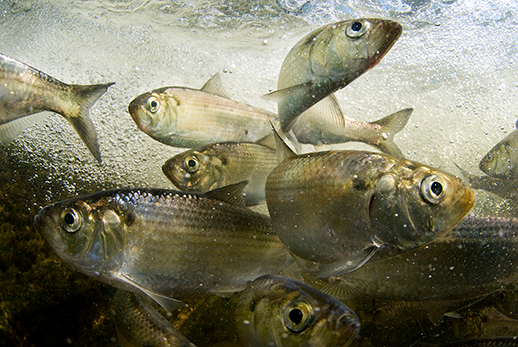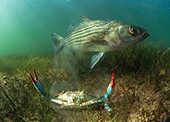|
October 2017 • Volume 16, Number 2

Jay Fleming
|
Jeffrey Brainard

Jay Fleming
The big fish eat the little fish, the proverb says, and scientists have been examining how this
ancient story plays out in the Chesapeake Bay. For more than 15 years, a research project called
ChesMMAP has caught striped bass and other key predators important to recreational and commercial
fishers. By studying what the predators eat, researchers developed new findings that could help
fisheries managers make decisions that will help sustain populations of these predators into the future.
more . . .
|
Small and oily, menhaden have been called the most important fish in the sea because of their
value to striped bass and other predators and to commercial fishers who process menhaden to make
various products. Researchers are learning more about a significant factor that influences the
menhaden population in the Atlantic Ocean: how many die each year from predation and other natural causes.
more . . .
|
Analyzing what fish eat can be challenging when scientists must identify stomach contents that
are partially digested. Like detectives as a crime scene, researchers are using DNA tools and a
genetic library to positively identify species eaten by Chesapeake Bay predators such as blue
catfish, a voracious eater.
more . .
|
Kelsey Brooks, a new Maryland Sea Grant Extension specialist, is helping communities in Northern Maryland to improve water quality.
more . . .
|
|